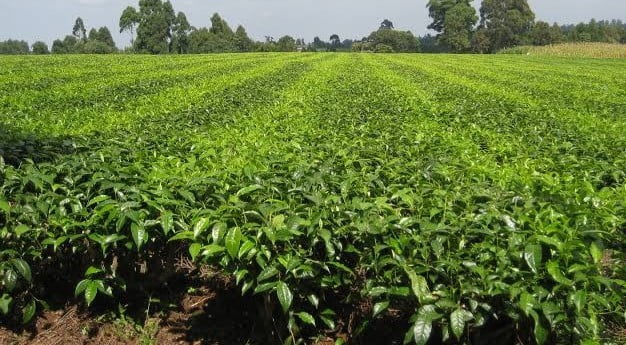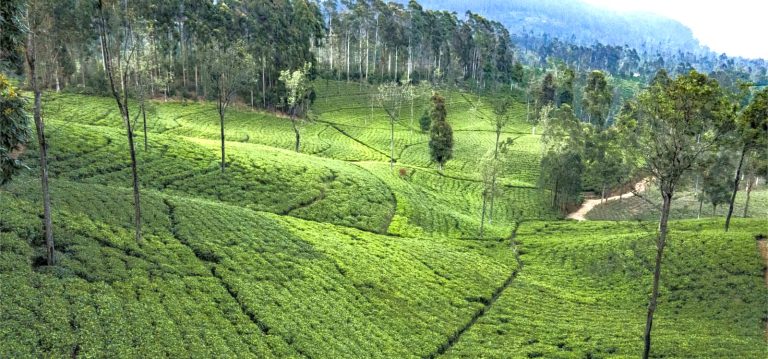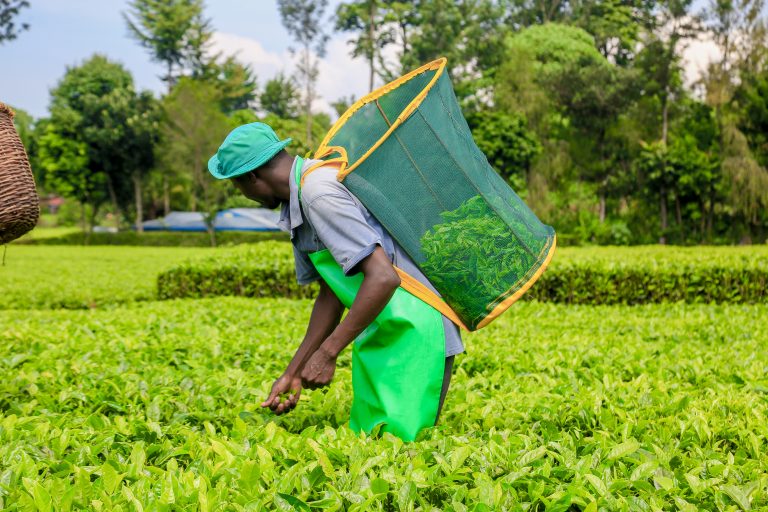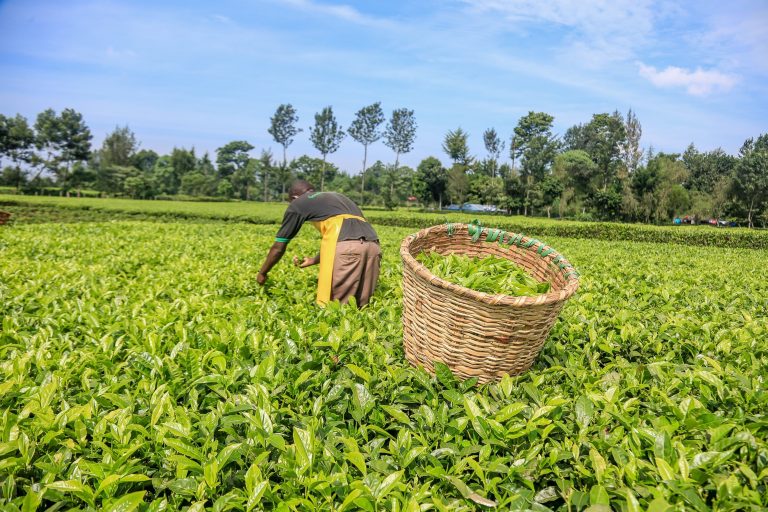Did you know that most of the world uses the same two words for tea? One variation is the one used in English (tea), French (thé), Spanish (té) and Dutch (thee). The other is a variation of chá (in Mandarin and Cantonese), such as chai in Hindi, shay in Arabic and chay in Russian. There’s an interesting reason for this.
Both words originate in China, which is widely believed to be the ‘home of tea’ and where the plant was first domesticated, and come from the Chinese character: 茶. In Mandarin and Cantonese, it’s pronounced ‘cha’. Countries around the world that use the word ‘cha’ originally imported tea over land, through the Silk Road, from the northern regions of China where they pronounce the word ‘cha’.
However, in the dialect spoken in the southern coastal province of Fujian, the word is pronounced ‘te’. This port is where 17th century Dutch merchants traded tea to bring to Europe, bringing back with them the pronunciation of ‘tea’. There are, of course, exceptions to this. But for the most part, wherever you are in the world, there’s a good chance you’ll know how to ask for a cup of tea with just those two words!
Tea’s etymology is just one element of its fascinating heritage. Its growth and production have been a part of cultures across the globe for centuries. To celebrate this, four incredible tea production areas have been designated Globally Important Agricultural Heritage Systems (GIAHS) sites for their combination of unique landscapes, agricultural heritage and traditional farming methods passed down for generations.
Pu’er Traditional Tea Agroecosystem in Yunnan Province, China
Yunnan province is considered the birthplace of the world’s tea. The Pu’er Tea Agroecosystem in Yunnan is the world’s largest area of tea forest plantations, where many tea trees are planted together in a simulation of forest ecosystem, established by village ancestors thousands of years ago and farmed using traditional methods. The system is rich in bio- and cultural diversity and is composed of old wild tea tree populations, ancient tea plantations and ancient cultivated tea plantations.
Local communities grow tea in harmony with other products necessary for livelihoods and food. Cultivated tea forests usually have three layers: the tree layer, the tea plant and bush layer and the herb layer. The tree layer consists of tall natural trees, offering shade and protection from the elements, with the tea plant and bush layer providing a source of income for farmers. The herb layer contains natural herbs, as well as cultivated grain crops and vegetables.
Pest control is carried out with natural methods that even help improve the flavour of the tea. Local communities grow certain trees, flower, fruit trees and vegetables in the plantations.
Jasmine and Tea Culture system in Fuhzou City, China
Jasmine plants and tea trees usually grow in different environments, but due to the diversified microclimate and mountainous slopes of the Fuhzou area, the landscape allow for both. This unique ecosystem means the tea is naturally scented with jasmine, a method developed in this area over 1 000 years ago and continued to this day.
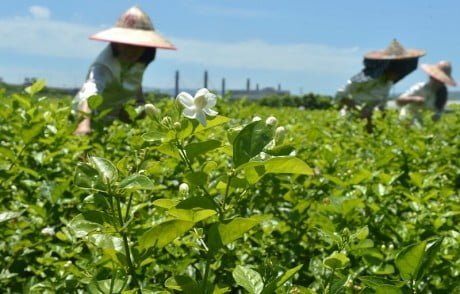
The Jasmine-tea system is a main source of livelihoods for the local community and the ecosystem it grows in supports diverse crop growth. Mushrooms, jasmine tea, milk and meat are all produced in the area, thanks to the jasmine and tea trees that enhance water and soil conservation in many ways. Jasmine trees also provide protection from the elements. Planted on the riverside plains and shoals, they prevent rain from directly scouring the riverside, mitigating soil, and water and soil erosion.
Traditional Tea-grass Integrated System in Shizuoka, Japan
The Shizuoka prefecture is the greatest tea-producing region in Japan, with its annual output of tea reaching around USD 293 647 475 (31.9 billion Yen). Around 78 percent of the area’s farmers depend on tea for income. The area is known for its deep-steamed tea, which has a distinct aroma and deep green colour.
Tea farmers also use shared fields called Chagusaba to grow and harvest natural grass that is then cut and spread over the tea field for better soil management and improved tea quality. Some Chagusaba are commons in which communities may retrieve grass resources when they need, whilst some Chagusuba are managed in a more structured way. This management of semi-natural grassland contributes to harnessing biodiversity. A complementary tradition called Yui, which is the set of social rules that guide the local farming community, has maintained Chagusaba through cooperation among local communities. Chagusaba and tea fields are distributed in a mosaic fashion creating a remarkable landscape.
Tea has been planted on mountain slopes where production of grains and vegetables were difficult and Chagusaba has been created in steep-sloped areas where even tea cultivation was difficult.
Traditional Hadong Tea Agrosystem in Hwagae-myeon, Korea
The Traditional Hadong tea agrosystem is an agricultural system created by local communities based on 1 200 years of adaptation to the barren environment of Jiri Mountain. Over 90 percent of the Hwagae-myeon area is steep mountainous land with frequent flooding during the monsoon season, making stable agricultural activities here very difficult. The people of Hwagae rely on tea agriculture instead of rice paddies to make their living.
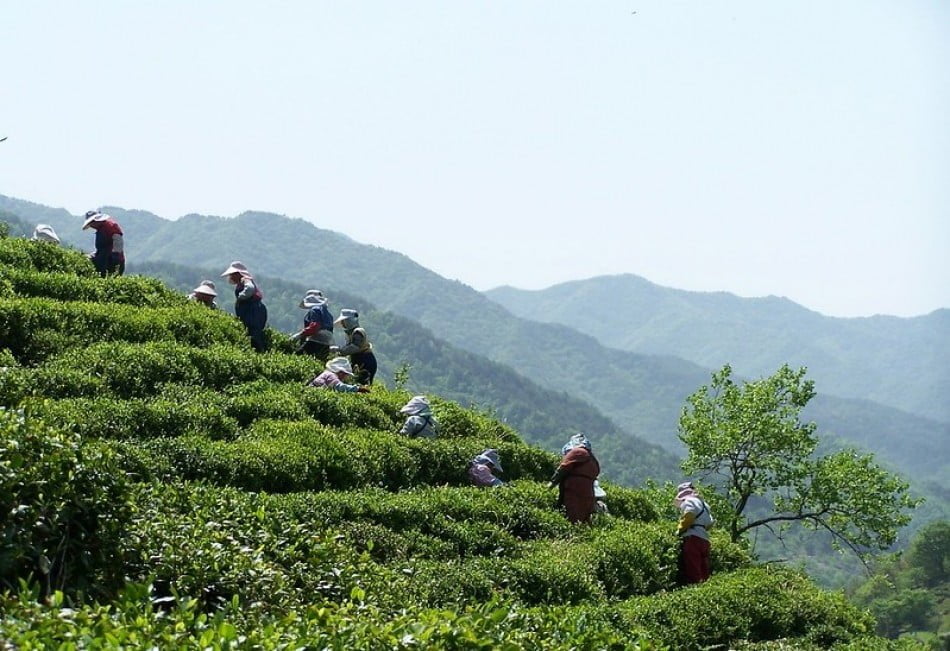
Over the last 1 200 years Hadong tea plants have adapted to the harsh environment, reproducing via insects and the wind, giving each tea field genetic diversity. The tea fields around Hwagae stream at the foot of the mountain exist in harmony with the surrounding natural environment, maintaining excellent biodiversity. Species of traditional Hadong tea are numerous, encouraging biodiversity in the area. Forests and rivers provide a home for diverse species of animals and plants indigenous to the Jiri Mountain area.
Tea has travelled across the world over the centuries, from its origins in China thousands of years ago to its status as a household staple for many across the world today. Tea production and processing is a main source of livelihoods for millions of families in developing countries, providing income for millions of poor families who live in a number of least developed countries. Tea production is vital to the fight against hunger, the reduction of extreme poverty, the empowerment of women and the sustainable use of land. This is why the United Nations designated 21 May as International Tea Day, to celebrate tea production and raise public awareness of the importance of tea for rural development, sustainable livelihoods and its contribution to food security.


